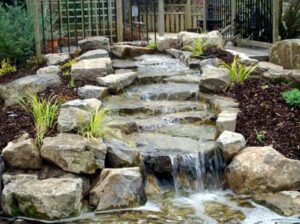As we head into a new season, you might be interested in some home maintenance tips for Fall. One of these is evaluating your home’s driveway. Over the years, driveways and sidewalks commonly crack or deteriorate. Paver or interlocking stone driveways are popular options, especially if style and elegance are valued over initial cost. People often neglect this but you really should maintain your interlocking stone driveway to keep it looking great.

Who needs weeds sprouting up and ruining the great aesthetics of your space? The answer is, “No one!”
Here, we will be examining steps to take in maintaining your interlocked driveway or walkway but before that, here are a few things you should note:
- Polymeric Sand is a mixture of finely-graded sand with a binder adhesive material. This sand can form a flexible but strong bond between interlocks, which is essential in avoiding water erosion in that region and inhibiting weed growth. The sand cannot perform this function without first being activated. This activation is popularly done by adding some water at a controlled quantity to the mixture of sand and binder.
- When fixing the interlocks, minimal space should be kept between them so as to avoid washing away the sand.
- Not performing maintenance of your stone pavers can also lead to accidents, caused by unstable or uneven stones.
- Before commencing with the maintenance process to be described shortly, use a tarpaulin or any material of that nature to cover sensitive parts such as plants or windows to avoid damaging them with the force of water.
- This maintenance should be done once every few years. Once every three and half years is considered good practice.
Maintain Your Interlocking Stone Driveway
Step one, power wash the interlock driveway or sidewalk. This simply means using water under very high pressure to wash the interlocking stone driveway or walkway. A power washer is a simple device that will handle this task.
Doing this creates more space between pavers that you will fill with more polymeric sand. During this process, you should ensure that there are no unwanted pieces of brick elements in the spaces to be filled by the sand before moving to the next step.
The next step is filling any and all spaces with polymeric sand. It’s simple really. Pour sand where you see it needs it. Easy!
Pouring of this polymeric sand to fill these spaces may be done manually or with a machine if the area to be covered is very large. To ensure an even spread to all spaces, a broom should be used to sweep the surface of the driveway or walkway after pouring the sand. This sweeping can also be manual or automated. Sweeping ensures a compact filling which is important to avoid waterlogs under the pavers.
Finally, wet the stones or pavers to settle the sand between the rocks. This builds stability. That’s it! Now your efforts have improved the function of your driveway or sidewalk and extended their life.



